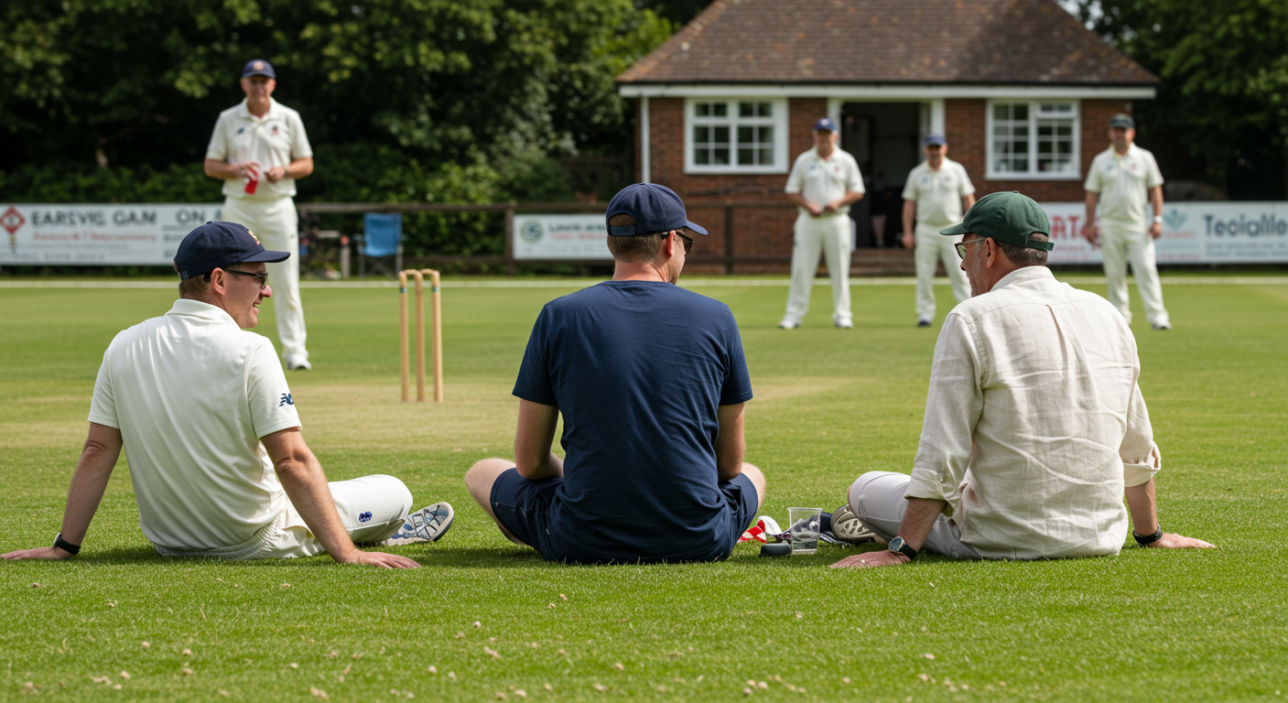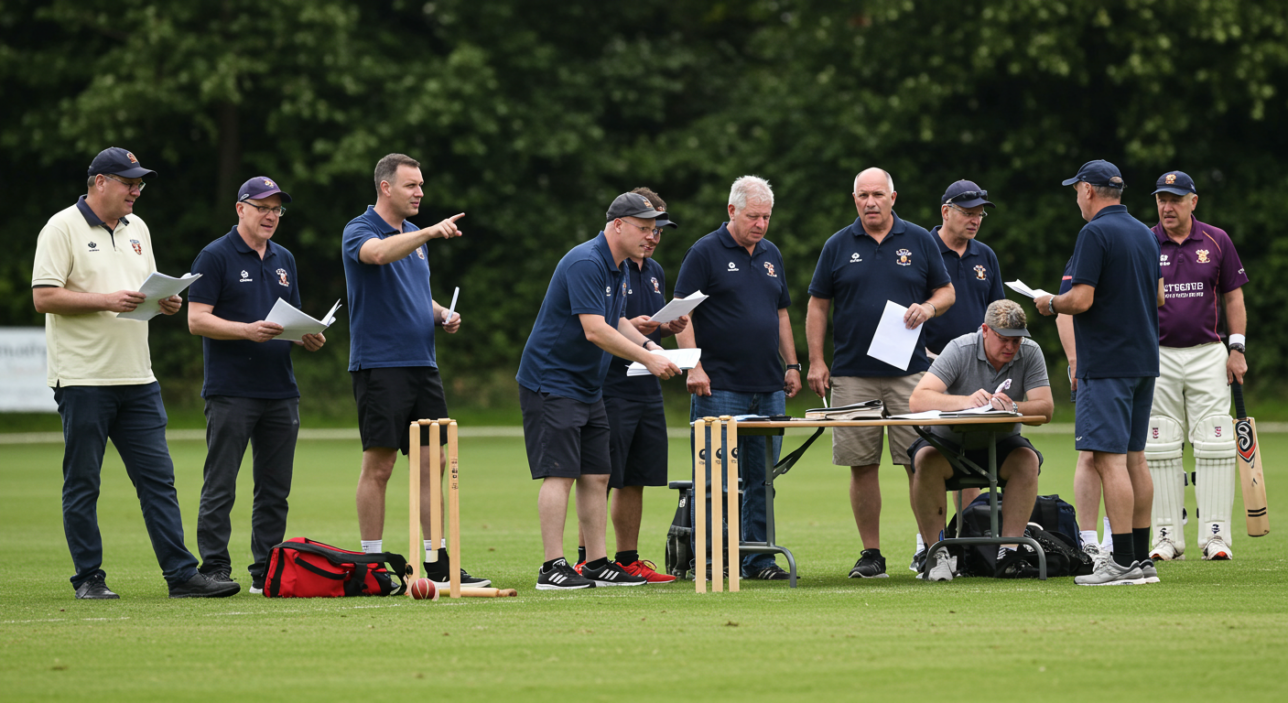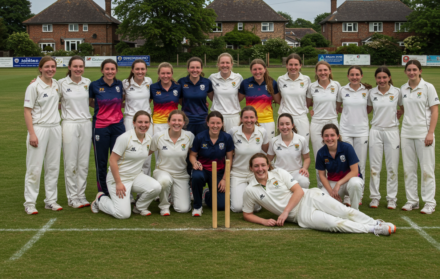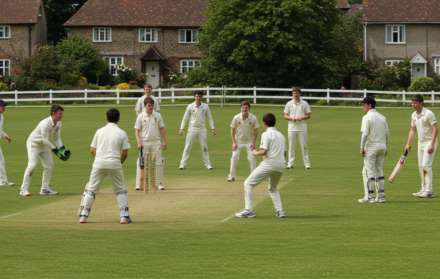
How to Organise a Village Cricket Friendly Match
Friendly matches are the heartbeat of village cricket. Less pressure than league games, but no less meaningful. They keep clubs active, offer game time for new or returning players, and foster the social side of cricket that holds clubs together. But while the word “friendly” suggests something casual, these fixtures still require proper organisation to run smoothly — and not every club knows how to pull one together effectively.
Whether you’re arranging a Sunday fixture against a nearby village or hosting a touring side from across the county, the basics remain the same. You need clear communication, good preparation, and a little patience. Done right, a friendly match can become a regular highlight in the season calendar.
This guide explains exactly how to organise a village cricket friendly match — step by step. From finding opponents and confirming details to handling teas, pitch prep, and who brings the stumps. It’s designed to help match organisers, captains, or committee members who want to make fixtures enjoyable for everyone involved — not just the players, but the volunteers, scorers, and spectators too.
Village cricket survives on goodwill and organisation. This isn’t about formal red-tape — it’s about keeping things smooth, fair, and welcoming. The better your friendly fixtures run, the more likely they’ll happen again. Here’s how to make sure they do.
1. Start by Finding a Suitable Opponent

The first step in how to organise a village cricket friendly match is simply finding a team to play. Start by looking at nearby clubs who aren’t in your league or who you don’t face regularly. Aim for a similar standard of cricket — friendlies work best when both sides are competitive but relaxed.
Reach out to other clubs in your area via email or phone. Many clubs publish a fixture secretary’s contact details on their website. You can also speak directly to captains at league matches or during social events. Try to give plenty of notice — most friendly schedules are set months ahead of time, especially for Sundays.
If your club is hosting, have a few dates ready. If you’re the away side, be flexible. You’ll also want to agree early on about start times, match format (40 overs, T20, timed game), and whether the fixture is to be taken seriously or kept light-hearted. Some friendlies are competitive, others more about participation.
Keep a written record of all confirmed details — including opposition contact names, dates, start time, location, and any agreed rules. It saves confusion later and avoids chasing people for basic info.
If you’re a new club, or struggling to find fixtures, county cricket boards often have contacts and networks that can help link you up with teams looking for matches. A good fixture is one that fits logistically, suits both teams’ needs, and sets the tone for a positive, well-spirited day.
2. Secure the Ground and Prepare the Pitch
Once the fixture is agreed, securing the ground is the next critical step. If your club has its own home ground, confirm that it’s available for the date you’ve chosen. Check this with whoever manages pitch bookings — it could be your groundsman, club secretary, or a parish council contact if it’s a shared facility.
Let your groundskeeper know the date as early as possible so they can factor it into their schedule. A decent pitch needs time and attention: mowing, rolling, marking, and possibly watering in dry spells. If you leave it too late, you may find yourself playing on a worn-out wicket or, worse, without a prepared strip at all.
If you don’t have your own ground and rely on hiring one, get the booking locked in early. Local council-run grounds can get snapped up quickly in summer. Double-check whether anything else is booked for the same day, like youth matches or bowls fixtures.
Also confirm access arrangements — you’ll need keys to the pavilion, scorebox, changing rooms, and covers if rain is forecast. Ask about things like toilet access and parking too. These practical details are easy to forget but can derail the day if not sorted.
This stage is often overlooked, but it’s a vital part of how to organise a village cricket friendly match. A well-prepared pitch and functional ground setup make everything else flow more easily on the day itself.
3. Confirm Player Availability and Set Expectations

Friendly matches only work when everyone knows what they’re signing up for. You’re aiming to get a full team, not just in numbers but in spirit — a mix of committed players who understand the tone of the day. Is it about giving youngsters a go? A gentle run-out for older heads? Or something more competitive?
Once you know the date and opposition, start confirming availability with your squad. Do this well in advance — at least a fortnight before the match — and follow up to fill gaps. Try to avoid late changes unless absolutely necessary, as they create confusion and can cause ill feeling with the opposition.
Let players know the agreed format, expected start and end times, and whether there will be teas or a post-match drink. If there’s flexibility in the batting order or retirements for junior players, make it clear early. It’s better to have these conversations before people pad up.
If you’re short, consider pulling in players from your junior section, a local school, or even social members who’ve played before. Friendly matches are a great place to include occasional players who might not commit to a full league season.
Keep things simple, polite, and consistent. A brief team email or message a few days before the match with key details can save a lot of stress. Clear expectations go a long way when learning how to organise a village cricket friendly match that’s smooth, enjoyable, and worth repeating.
4. Organise Teas and Pavilion Facilities
Few things say “village cricket” like a proper cricket tea. Even in friendlies, it remains a big part of the day — a social break that brings both teams together and keeps the atmosphere relaxed and welcoming. But good teas don’t happen by accident.
Start by checking whether your club normally provides teas or expects players to bring their own. If you’re hosting, clarify early who’s in charge of organising it. Many clubs have a rota of volunteers, while others collect a few pounds from each player to cover the cost.
If you’re doing it yourself, keep it simple but generous. Sandwiches, crisps, fruit, cakes, and plenty of tea or squash will do. Avoid overcomplicating it with hot food unless your kitchen setup can handle it. Include vegetarian or dietary-friendly options if you know you’ve got players who’ll need them.
On the day, make sure the pavilion is clean and unlocked well before players arrive. Have mugs, plates, bin bags, and washing-up stuff ready. Make space for changing and give the visiting team a spot to store their bags. It sounds obvious, but tidy, available facilities make a big difference to the experience.
If you’re the away side, check whether teas are included or if players should bring their own. Nothing sours a day quicker than 22 hungry cricketers and no sandwiches in sight.
Making sure food and facilities are sorted is a vital step in how to organise a village cricket friendly match that people actually enjoy and want to be invited back to.
5. Confirm Umpires, Scorers and Match Format

Friendly matches are often informal, but that doesn’t mean you can skip the basics. Sorting out who’s umpiring and scoring helps avoid confusion — and keeps the match fair and flowing smoothly.
If you’re lucky enough to have regular club umpires or scorers, ask them early. Many are happy to help if given notice. If not, check whether each team can provide one person for each role and alternate innings. Make sure both sides agree on this in advance.
Don’t assume someone will bring a scorebook or stumps — assign it. Confirm what equipment each side is bringing: new balls, bails, spare kit if needed. Agree on how many overs the match will be, what time you’ll start, whether you’re having drinks breaks, and how retirements or junior players will be handled.
The match format should suit the level of ability and availability of both sides. Some clubs prefer a straight 40-over match, others go for 30 or 35 overs to allow for relaxed starts or longer teas. If there’s rain forecast or a shorter window, a 20-over game might be more sensible.
Whatever you choose, clarity is key. A quick run-through of the rules with both teams before the toss helps avoid disagreements later. Nothing derails a friendly fixture like confusion over declarations, retirements, or who was meant to keep score.
Properly handling these small but essential details is a cornerstone of how to organise a village cricket friendly match that runs on time, feels fair, and keeps everyone focused on enjoying the cricket.
6. Matchday Logistics and Running Order
The day of the fixture is where all the planning comes together. Arrive early — ideally at least 90 minutes before the scheduled start — to unlock the pavilion, check the pitch, and get the ground set up. If you’re the organiser, you’re likely the first one there and the last to leave.
Ensure the stumps, boundary markers, and scoreboard are ready. Check the pitch condition — even if it was prepared earlier in the week, weather can change things fast. If it’s damp or uneven, discuss it with the captains and umpires. Sort out changing rooms for both teams and make sure toilets are unlocked and clean.
Have the match ball ready and spare ones available. Set out chairs or benches for players, especially if there’s limited shade or shelter. It might feel like overkill, but these little things help make the day feel organised and respectful — especially when hosting a club for the first time.
Before play begins, gather both teams for a quick run-through of match format, any agreed rules, and where everything is located. This helps avoid mid-match confusion.
During the game, try to keep things running to time — especially if it’s a 40-over fixture. Stick to start times, limit delays between innings, and make sure drinks and tea breaks are clearly agreed in advance.
A smooth matchday experience is a crucial part of how to organise a village cricket friendly match that people enjoy and want to repeat the following year.
7. Encourage the Social Side and Do a Proper Follow-Up

Once the final ball is bowled and the handshakes are done, your job as organiser isn’t quite over. In fact, what happens after the game often shapes how players remember the day.
Encourage both teams to stay for a drink, even if it’s just a quick one in the pavilion or the local pub. This is where friendlies earn their name — in the quiet conversations over pints and soft drinks, where future fixtures are discussed and club ties are built.
If you’re hosting, thank the opposition for coming and check if everything met their expectations. If anything didn’t go to plan — a late start, a pitch issue, a player shortage — acknowledge it openly. Most teams are understanding if they feel respected.
In the days following the match, send a brief thank-you email or message to the opposing club. Confirm any return fixtures if discussed. If someone scored a ton or took a five-for, include a mention — it’s a small gesture, but one that builds good relationships.
If you had umpires or scorers volunteer their time, thank them properly. If you collected any money for teas or ground fees, settle those up promptly. And take ten minutes to jot down anything that could be improved for next time.
This follow-up process is often skipped, but it’s a big part of how to organise a village cricket friendly match that feels joined-up, respectful, and worth repeating every season.
Conclusion: How to Organise a Village Cricket Friendly Match

Friendlies are the soul of village cricket. They connect clubs, give playing time to those outside the league structure, and bring communities together over a shared love of the game. But behind every relaxed, enjoyable Sunday fixture is someone who put in the effort to make it happen.
Knowing how to organise a village cricket friendly match isn’t about overcomplicating things — it’s about being clear, prepared, and thoughtful. From finding the right opponent and securing the ground, to preparing teas, confirming players, and handling the matchday flow, every step contributes to a successful fixture.
And it matters. A well-run friendly fixture builds goodwill between clubs, gives younger or less experienced players a chance to grow, and keeps cricket inclusive and social. With many league calendars packed or overly competitive, friendlies offer breathing room — a place for slower afternoons, shared laughter, and the odd golden duck nobody minds too much.
They also keep clubs active. Teams that organise regular friendlies are more likely to attract casual players, keep volunteers engaged, and stay visible in their local communities.
So whether you’re a new organiser or someone stepping up to help your club, don’t underestimate the impact of doing this well. Friendly cricket, when done right, leaves a lasting impression — and ensures that village cricket keeps thriving, one well-organised Sunday at a time.





